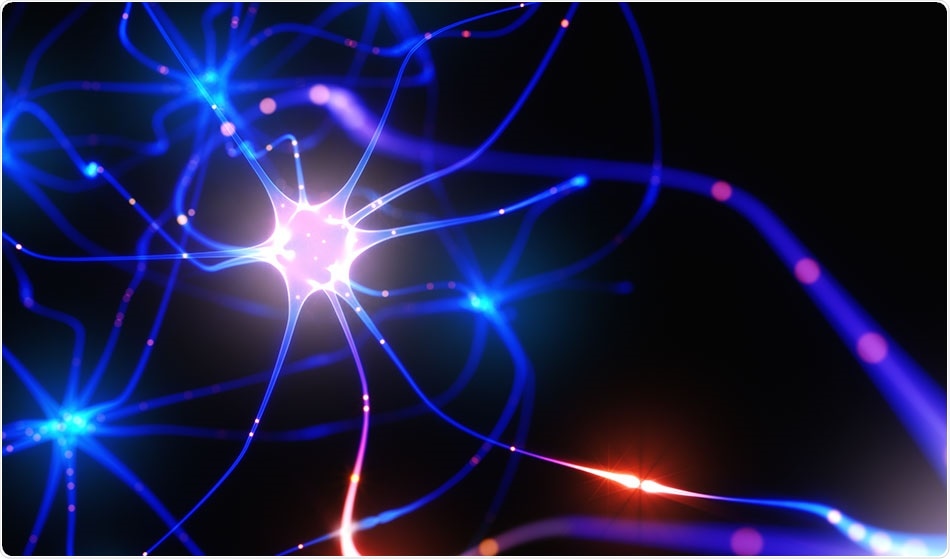Jan 9 2018
A collaborative study conducted by Emory University School of Medicine and Mayo Clinic, Jacksonville indicated that a cellular traffic jam may be the cause of damage to the neurons in most forms of amyotrophic lateral sclerosis (ALS).

Credit: ktsdesign/Shutterstock
Prior ALS research had found nuclear transport problems in the most common inherited form of the neurodegenerative disease, caused by mutations in the C9 or f72 genes.
Inherited mutations can be held responsible for only a minority of ALS cases. The rest of the cases are sporadic and are expected to occur due to a combination of both environmental and genetic factors.
The current study suggests that a drug strategy focused at reducing the cellular traffic jam might be helpful in sporadic as well as a few familial types of ALS.
Dr. Wilfried Rossoll, a senior author of the study and assistant professor of neuroscience at the Mayo Clinic, said that the project started with an exploration of a protein named TDP-43, which is a "bad actor" in both frontotemporal dementia (FTD) and ALS.
Rossoll explained that TDP-43, which is generally found in the nucleus, was considered a "victim" of transport defects in the C9 or f72 form of ALS. In neurons affected by ALS, truncated forms of TDP-43 aggregate in the cytoplasm , preventing neuronal transport.
We show that TDP-43 is also a 'perpetrator', in that it can cause transport defects on its own in most ALS cases and potentially other neurodegenerative diseases with TDP-43 pathology, such as frontotemporal dementia
Dr. Wilfried Rossoll
The research team wanted to find out how TDP-43 aggregates cause damage to neurons. However, as these aggregates are insoluble, they are difficult to analyze. A technique similar to the way banks attempt to foil robbers by loading dye packs, ready to burst into stacks of cash, was used by the team.
An enzyme was grafted onto TDP-43 that tags everything nearby in live cells. The researchers then isolated and identified each of the tagged proteins.
Several gatekeeper proteins; components of the nuclear pore, which are critical for moving traffic in and out of the nucleus,in neurons in which the TDP-43 fragment was aggregating and making them sick, were tagged by the enzyme.
When TDP-43 clumps together, so do the nuclear pore proteins.
Dr. Ching-Chieh (Ian) Chou, PhD, the lead author of this study, found that the shape of the nuclear membrane and the nuclear pores are altered by the clumping, thereby disrupting the import of proteins into the nucleus and export of RNA out of it.
The team identified alterations in the nuclear structure in skin cells obtained from patients with both C9 or f72 forms and others. Similar problems were also identified in neurons generated from induced stem cells of the patients.
The researchers also identified aggregates of nuclear pore proteins in post-mortem brain tissue from ALS patients. More importantly, thes aggregates were seen in sporadic ALS cases as well as in those who had mutations in C9 or f72 or TDP-43.
TDP43 pathology is seen in about 98 percent of ALS cases and about 50 percent of FTD cases, and our work supports the now accepted conclusion that nucleopore abnormalities are not restricted to C9orf72 expansion mutations.
Jonathan Glass, MD, professor of neurology and director at the Emory ALS Center.
Glass commented that confirming the in vitro data in human brain tissue was vital as it compounded the findings. According to him, confusion surrounding TDP-43 aggregation and the nuclear pore abnormalities are not yet clear.
Producing aggregation-prone TDP-43 fragments by forcing cultured neurons is toxic.
However, the findings suggested that a drug that clamps down on some nuclear transport routes has the capability to blunt the toxic effects in culture. This drug inhibits nuclear export.
Rossoll commented that the drug may compensate for disrupted protein import, and can prevent a large accumulation of TDP-43 outside the nucleus.
Similar drugs have indicated beneficial effects in animal models of the C9 or f72 form of ALS and this class of drugs is headed for clinical studies.